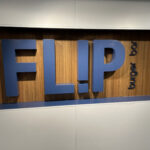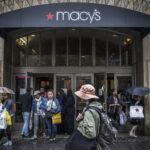Spending time by the lake is a fantastic way to enjoy the outdoors, especially during the warmer months near 32nd Street. Whether you’re a resident or visitor to the 32nd Street area, it’s important to be aware of potential health risks associated with natural lake water. This guide will help you understand common issues and how to protect yourself and your family while enjoying the lake.
Understanding Rainfall and Lake Water Quality near 32nd Street
Heavy rainfall significantly impacts the water quality of lakes, including those around 32nd Street. Rainwater runoff carries bacteria from various sources into the lake, leading to elevated bacteria levels. These levels typically subside within 48 hours after the rain stops. To ensure your safety:
- Avoid swimming immediately after rain: Wait at least 48 hours after a significant rainfall before swimming in the lake near 32nd Street.
- Minimize water ingestion: Be cautious and try to avoid getting lake water in your mouth while swimming or playing.
- Practice good hygiene: Wash your hands thoroughly with soap and water before eating, especially after being near the lake, and always after diaper changes.
- Shower after swimming: Take a shower with soap and fresh water as soon as possible after swimming in the lake to remove potential contaminants.
Swimmer’s Itch: Prevention Tips for 32nd Street Lake
Swimmer’s itch, also known as cercarial dermatitis, is a common skin rash experienced by lake users, including those at 32nd Street Lake. It’s a temporary and harmless reaction to parasites that affect birds and snails but cannot survive in humans. The itchy red welts typically appear after swimming, particularly on calm, hot summer days. While uncomfortable, swimmer’s itch is not serious and usually resolves on its own. Minimize your risk at 32nd Street Lake by following these steps:
- Vigorously towel dry immediately: As soon as you leave the water, briskly rub your skin with a coarse towel. This can help remove parasites before they penetrate the skin.
- Dry under swimwear: Pay special attention to drying under your swimsuit, especially around the waistband and leg openings, where water can pool.
- Shower promptly: Shower with soap and fresh water as soon as you can after swimming in the lake.
Naegleria Fowleri: Understanding the Rare Risk at 32nd Street Area Lakes
Naegleria fowleri is a microscopic amoeba found in warm freshwater and soil. While rare, it can cause a severe and often fatal brain infection called primary amebic meningoencephalitis (PAM). It’s important to understand that infection is very uncommon, but awareness and preventative measures are crucial for lake users near 32nd Street.
From 2005 to 2014, there were 31 reported infections in the United States linked to swimming in contaminated water. While any instance is concerning, the risk remains statistically low. Infection occurs when water containing the amoeba enters the body through the nose. It’s crucial to note that you cannot get infected by swallowing contaminated water, and the amoeba cannot penetrate the skin. To reduce your already low risk at 32nd Street lakes:
- Keep your head above water: Avoid putting your head underwater while swimming or playing in warm freshwater.
- Use nose protection: Hold your nose shut with your fingers or use nose clips when entering freshwater.
- Avoid warm, shallow water: Be extra cautious in warm freshwater when the water temperature is high and the water level is low, as these conditions can favor amoeba growth.
- Don’t disturb sediment: Avoid digging or stirring up the sediment in shallow, warm freshwater areas, where amoebae may be more concentrated.
For more detailed information, please refer to reputable sources like the Minnesota Department of Health and the Centers for Disease Control and Prevention websites. These resources offer comprehensive information on Naegleria fowleri and water safety.
Pet Waste and Lake Bacteria Levels around 32nd Street
Pet waste is a significant contributor to increased bacteria levels in lakes, particularly in areas like 32nd Street where urban runoff can easily reach waterways. When pet waste from yards, streets, and parks is washed into lakes, either directly or through storm sewers after rain, it introduces harmful bacteria. Responsible pet ownership is crucial for maintaining clean and safe lake water for everyone.
- Pick up after your pet, always: Whether you’re at 32nd Street Park or walking near the lake, always pick up your pet’s waste.
- Dispose of waste properly: Dispose of pet waste in designated trash receptacles to prevent it from washing into the lake.
By following these simple guidelines, residents and visitors to the 32nd Street area can enjoy the lake safely and responsibly, contributing to a healthier environment for everyone.


